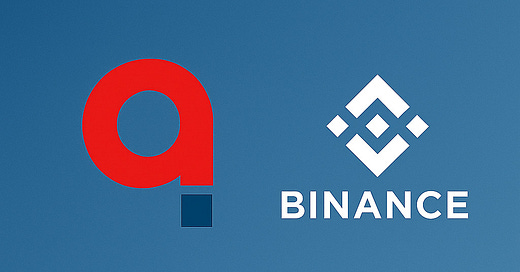What AFRX Is Doing Differently From Binance: A Tale of Two Models
Binance is one of the largest cryptocurrency exchanges in the world. But it's also one of the most frequently investigated, fined, and banned platforms across various jurisdictions. The reason? A business model that prioritized rapid expansion over regulatory alignment.
This article is not a direct product-to-product comparison, but a contrast between two very different philosophies: the fast-and-loose growth strategy of early crypto platforms like Binance, versus the compliance-first, asset-backed model behind AFRX.
Here’s how AFRX is building a new standard in digital finance—learning from where Binance went wrong.
1. Operating Without Proper Licenses
Binance has repeatedly offered services such as crypto trading, staking, and derivatives in jurisdictions where it lacked the proper licenses. This has triggered enforcement actions in the U.S., U.K., Germany, Japan, and other countries.
AFRX is different. It's issued under the SEC's Regulation D Rule 506(c) and Regulation S, and is tokenized on Tokeny—a regulated platform in Luxembourg. AFRX operates through a transparent legal structure, governed by U.S. law.
2. Weak KYC/AML Controls
Binance historically allowed users to trade with minimal or no identity verification, making it a hotspot for money laundering and illicit financial flows.
AFRX takes the opposite approach. Investor onboarding is powered by Sumsub, ensuring full KYC/AML compliance. Every investor is verified before participating.
3. Offering Unregistered Securities
Binance got into trouble for listing tokens and financial products that regulators later classified as unregistered securities. The SEC took issue with this in multiple lawsuits.
AFRX is a registered security token from the outset. It represents real equity in Afrail Inc., with full disclosure and structured compliance.
4. Commingling of Funds
One of the most serious allegations against Binance was that it commingled customer funds with company operating funds—a violation of basic financial governance.
AFRX avoids this entirely. Funds are transparently tracked on-chain, and equity is clearly defined. Cap tables are managed and auditable.
5. Global Entity Confusion
Binance used a maze of international shell entities to avoid regulatory oversight. This confused regulators and customers alike, obscuring responsibility and accountability.
AFRX as a security token is offered and backed by real equity in Afrail Inc., a C-Corporation, incorporated in Delaware (USA) and clearly operates with a defined legal entity. It is headquartered in Atlanta, Georgia, USA, and has a permanent operational presence in Oshakati, Namibia, and is transparent about its structure.
The Bottom Line: Compliance Is Not Optional
Binance may have succeeded in the short term by racing ahead of regulation. But AFRX is built for the long term, with legal clarity, real-world asset backing, and transparent investor protections.
AFRX is not just a token. It's a gateway to compliant, blockchain-based ownership in infrastructure projects in high-growth markets.
Learn more about AFRX Security Token at https://afrx.io
🔒 Compliance Disclaimer
AFRX is a security token representing tokenized equity in Afrail Inc., a U.S.-incorporated company. AFRX is issued in full compliance with Regulation D Rule 506(c) and Regulation S of the U.S. Securities Act of 1933. The information provided herein is for educational and informational purposes only and should not be considered an offer to sell or a solicitation of an offer to buy any security. Any investment in AFRX is available only to verified accredited investors through authorized channels and is subject to applicable securities laws.




